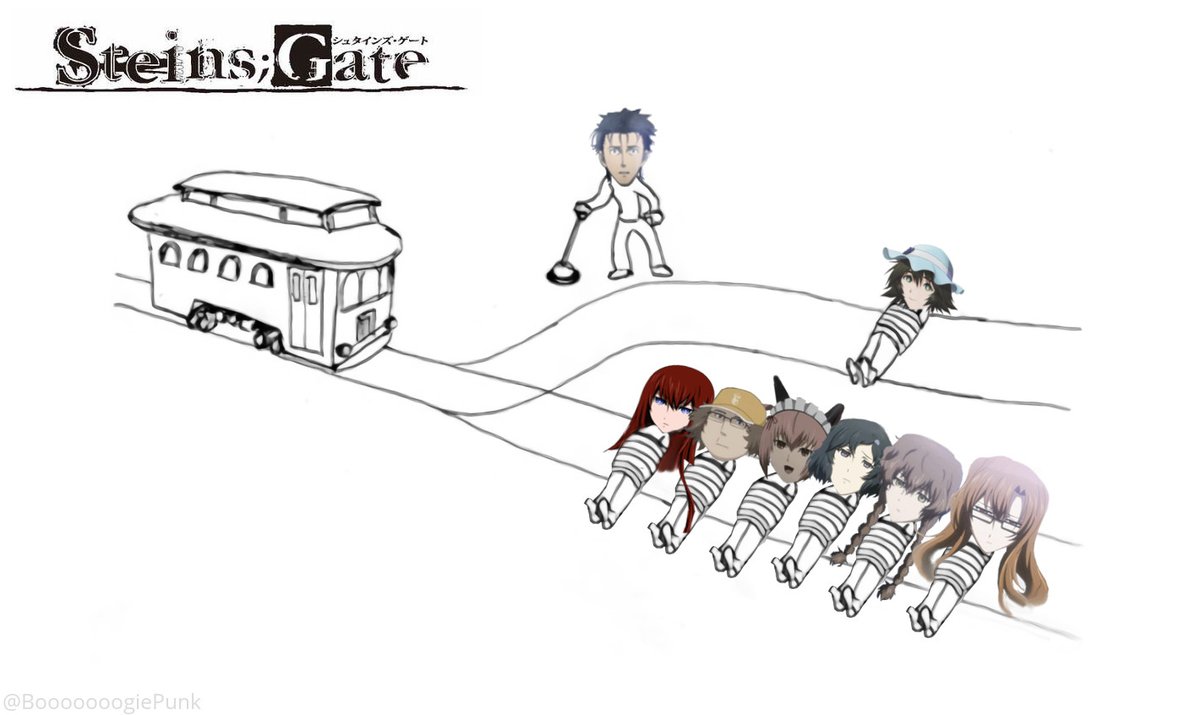Note: this post contains heavy spoilers for the original Steins;Gate anime.
If you had the power to change the natural course of things for the better, would you do it?
What if, even if the changes were a net positive, they ended up hurting someone?
This is the question posed by the Steins;Gate anime, and ultimately by the trolley problem, a thought experiment in the field of ethics. In the trolley problem, five people are tied to the tracks of a runaway trolley. You stand at a lever that, if pulled, will divert the trolley to another track, saving the five captives. However, there is a single person tied to that track. The problem asks people whether or not they would do nothing and let the five people die, or whether they would pull the lever, killing the one person.

On paper, it’s easy to approach the problem from a purely utilitarian standpoint (cue the sounds of Gen Urobuchi breathing heavily), i.e., the correct choice is the one that results in fewer people dying. However, the model can be tweaked to amplify the moral ambiguity of the choice. One popular variant is the “fat man” variant, where instead of pulling a lever, you choose whether or not to push a fat uninvolved bystander onto the track to slow the trolley. Or the “fat villain” variant, where the fat man is not an innocent bystander but the man who tied the people to the track in the first place. However, they all ultimately ask the same question: is saving five lives worth taking one life? While these variations ultimately make the choice easier or more difficult by adding context, it simply emphasizes that ethical choices like this one aren’t always as simple as black-and-white as they seem. Continue reading “Steins;Gate and the Trolley Problem”

